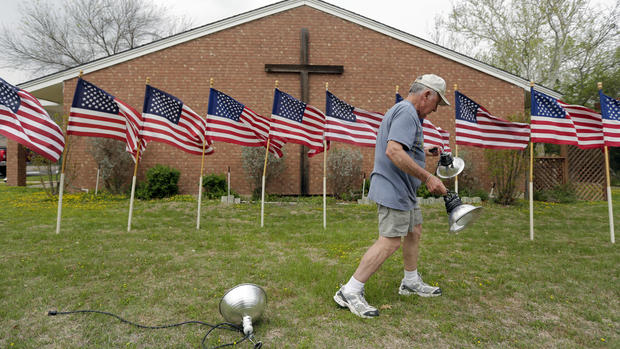Fort Hood shooting: Gaps in detecting mental health issues persist in military
Investigators are beginning to piece together what led Army Spc. Ivan Lopez to open fire at Fort Hood, killing three people and wounding 16 others.
Lt. Gen. Mark Milley, the commander at Fort Hood, called Lopez's mental health "unstable," and pointed to the possibility of an argument before the attack.
Investigators have also been told that Lopez may have been upset because the Army had refused to grant him personal leave, CBS News has learned.
But now, officials want to know why Lopez wasn't seen as a threat.
The Army screens every one of its soldiers before, during and after their combat tours, but it still has not figured out how to tell a troubled soldier who needs help from a dangerous one who must be stopped, David Martin reported.
Lopez served four months in Iraq, but never saw direct combat, CBS News' Anna Werner reported. He self-reported a traumatic brain injury, and in recent months he had sought treatment for depression, anxiety and sleep disturbance.
Lt. Gen. Mark Milley, the commander at Fort Hood, said, "We have very strong evidence he had a medical history that indicates unstable psychiatric conditions. We believe that to be the fundamental underlying causal factor."
While terrorism is not being ruled out, no direct link to any extremist organization has been found.
Reviews of last year's Navy Yard shooting found that Aaron Alexis held a secret security clearance, despite severe mental problems. Two weeks ago, when Defense Secretary Chuck Hagel released the findings, his words were eerily prophetic: "The reviews identified troubling gaps in the (Department of Defense's) ability to detect, prevent, and respond to instances where someone working for us decides to inflict harm on this institution and its people," he said.
After Maj. Nidal Hassan killed 13 people at Fort Hood in 2009, the Pentagon instituted reforms designed to close the cracks that Hassan had fallen through, including an increased level of screening and more mental health professionals.
Retired Gen. Pete Chiarelli was the No. 2 man in the Army at the time. In a 2012 interview with "60 Minutes," he said those behavioral indicators are often hard to detect. He said, "Is it post-traumatic stress? Is it personality disorder? Is it depression? That's not always clear."
And, says Milley, there is no practical way to prevent an angry soldier from sneaking a gun onto a base. He said, "We've got a population of well over 100,000 here. It would not be realistic to do a pat-down search on every single soldier and employee on Fort Hood for a weapon on a daily basis."
The sheer numbers almost guarantee mistakes. According to Pentagon figures, there are 9,500 mental health workers in the military and last year they had 10.5 million visits from patients.

